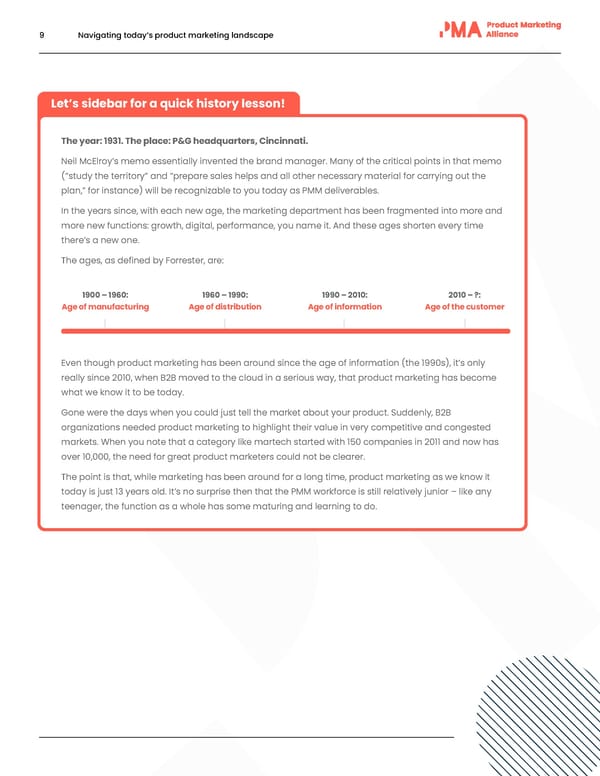9 Navigating today’s product marketing landscape Let’s sidebar for a quick history lesson! The year: 1931. The place: P&G headquarters, Cincinnati. Neil McElroy’s memo essentially invented the brand manager. Many of the critical points in that memo (“study the territory” and “prepare sales helps and all other necessary material for carrying out the plan,” for instance) will be recognizable to you today as PMM deliverables. In the years since, with each new age, the marketing department has been fragmented into more and more new functions: growth, digital, performance, you name it. And these ages shorten every time there’s a new one. The ages, as defined by Forrester, are: 1900 – 1960: 1960 – 1990: 1990 – 2010: 2010 – ?: Age of manufacturing Age of distribution Age of information Age of the customer Even though product marketing has been around since the age of information (the 1990s), it’s only really since 2010, when B2B moved to the cloud in a serious way, that product marketing has become what we know it to be today. Gone were the days when you could just tell the market about your product. Suddenly, B2B organizations needed product marketing to highlight their value in very competitive and congested markets. When you note that a category like martech started with 150 companies in 2011 and now has over 10,000, the need for great product marketers could not be clearer. The point is that, while marketing has been around for a long time, product marketing as we know it today is just 13 years old. It’s no surprise then that the PMM workforce is still relatively junior – like any teenager, the function as a whole has some maturing and learning to do.
 Navigating today’s product marketing landscape Page 8 Page 10
Navigating today’s product marketing landscape Page 8 Page 10